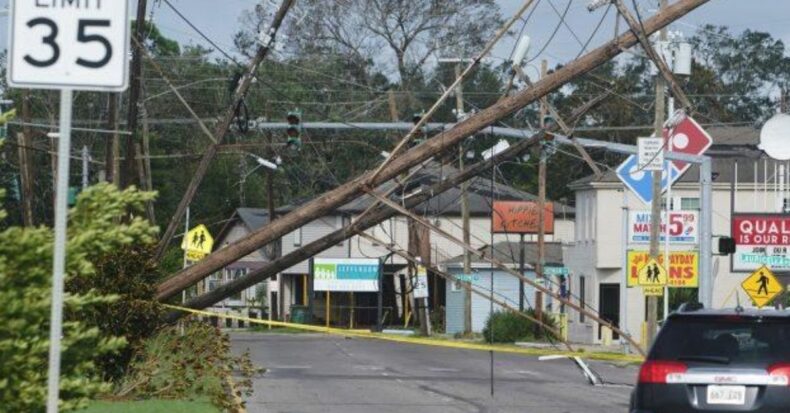Hurricane Ida has rapidly gained strength right before it hit Louisiana this weekend. Abnormally hot water in the Gulf of Mexico acted as fuel.
Ida was a fierce Category 4 hurricane when it came ashore Sunday in Louisiana. With sustained winds of about 150 mph, the storm ripped roofs off buildings and snapped power poles.
It pushed a wall of water powerful enough to sweep homes off foundations and tear boats and barges from their moorings.

Climate change helped Ida rapidly gain strength right before it made landfall. In about 24 hours, it jumped from a Category 1 to a Category 4 storm as it moved over abnormally hot water in the Gulf of Mexico.
The ocean was the temperature of bathwater — about 85 degrees Fahrenheit. According to the National Oceanic and Atmospheric Administration measurements, That’s a few degrees hotter than average.
The extra heat acted as fuel for the storm. Heat is energy, and hurricanes with more power have faster wind speeds and larger storm surges.
Scientists say that rapidly intensifying significant hurricanes like Ida are more likely to occur as the Earth heats up.
The trend is particularly apparent in the Atlantic Ocean, which includes storms such as Ida that travel over the warm, shallow water of the Caribbean Sea.

A 2019 study found that hurricanes that form in the Atlantic are more likely to get powerful very quickly.
Residents along the U.S. Gulf Coast have been living with that climate reality for years. Hurricane Harvey in 2017, Hurricane Michael in 2018 and Hurricane Laura in 2020 all rapidly intensified before they made landfall. Now Ida joins that list.
Hurricanes such as Ida are extra dangerous because there’s less time for people to prepare. By the time the storm’s power is apparent, it can be too late to evacuate.
Abnormally hot water also increases flood risk from hurricanes. Hurricanes suck up moisture as they form over the water and then dump that moisture as rain.
The hotter the water — and the more desirable the air — the more water vapour gets sucked up.
Even areas far from the coast are at risk from flooding. Forecasters are warning residents in Ida’s northeastward path to the Mid-Atlantic that they should prepare for dangerous amounts of rain. Parts of central Mississippi could receive up to a foot of rain on Monday.
With conditions too dangerous to attempt rescue operations, officials pleaded with people in flooded areas to stay in their homes and wait for the storm to pass.
This monster could not be battled or outrun. As night fell on Louisiana and Ida ploughed inland, all people could do was endure.













